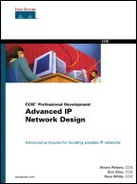Mechanics of a Path Vector Protocol
BGP is unique among all the currently used routing protocols because it relies on information about the vector (direction) to a destination and the path to a destination to prevent routing loops. All other commonly used routing protocols, such as OSPF, IS-IS, and EIGRP, rely on metrics or costs combined with some level of topology information to prevent routing loops.
Look at Figure D-1 for an example of the operation of a path vector protocol.
Suppose that Router A originates a route to 10.1.1.0/24 toward Router B. In the information on how to reach this destination, Router A notes that it is the first router in the path. Router B receives this route, adds itself to the path, and advertises the destination to Router C. Router C adds itself to the path and advertises it to Router D.
When Router D receives the route to this destination, it sees that the path is through Routers C, B, and A. It, likewise, adds itself to the path and advertises it back to Router A. When Router A receives this advertisement, it sees that it is already in the path to this destination and rejects the route.
This is essentially how BGP works—except that instead of individual routers marking the route with some information, each AS in the path marks the route. Any router that receives the route can see if the path to this destination is a loop by checking if the AS they are listed in is one of the ASs listed in the path.
For a concrete example, see Figure D-2.
Figure D-1. A Path Vector Example

Figure D-2. An AS-Based Path Vector Example

In this case, Router A originates a route for 10.1.1.0/24 toward Router B, which in turn forwards it to Router C. When Router C receives this route, it recognizes that the route originated from a router in another AS and adds that AS to the path to this destination (the AS path).
Router C forwards the route to Router D, which also recognizes that this route originated in an AS other than its own, and Router D adds AS3 to the AS path. Router D then forwards the route to Router E.
When Router E receives this route, it examines the AS path and sees that the AS it is in, AS1, is already in the AS path. Because of this, Router E will assume this advertisement represents a loop (it does from an AS-level view) and discards the advertisement.
